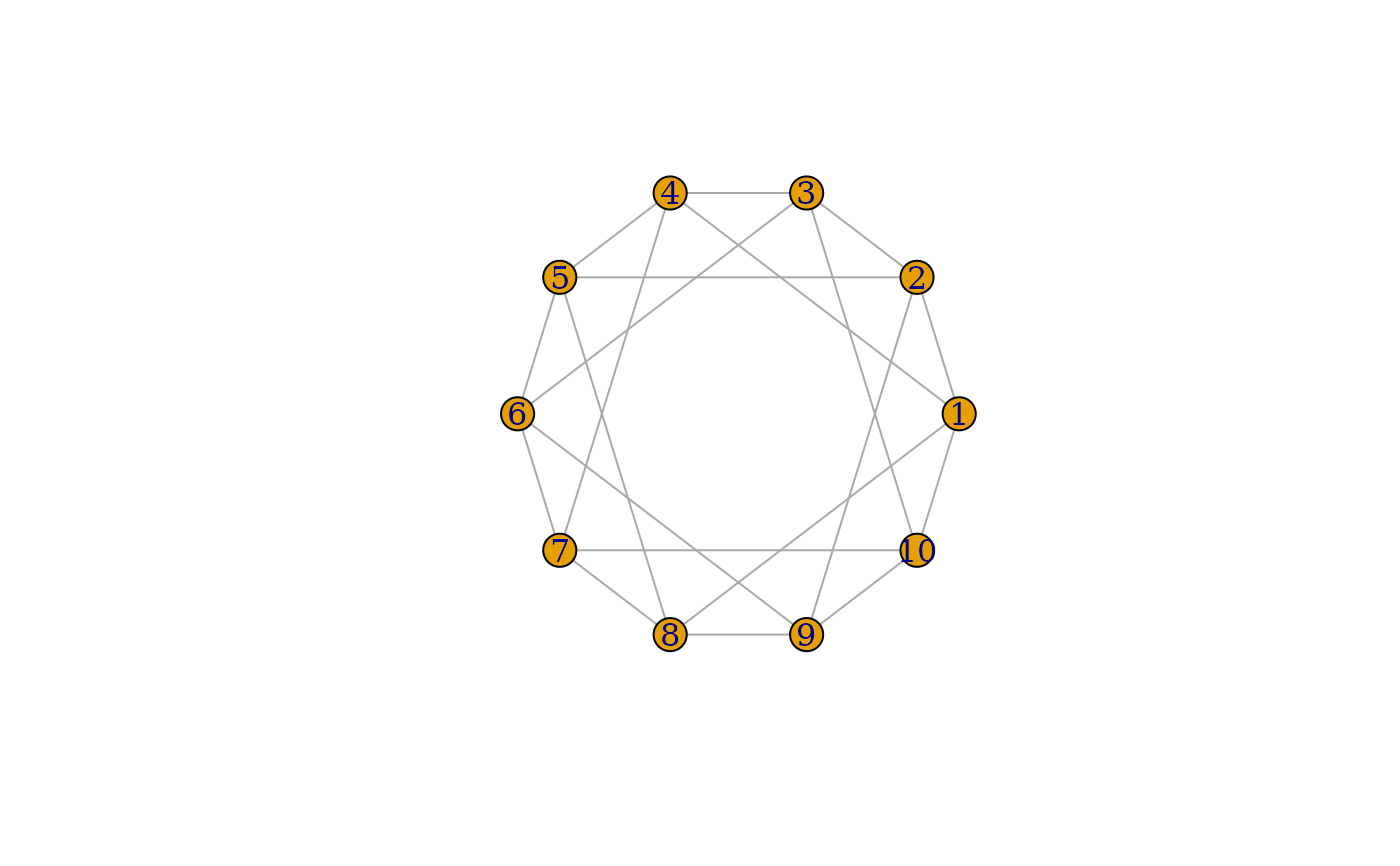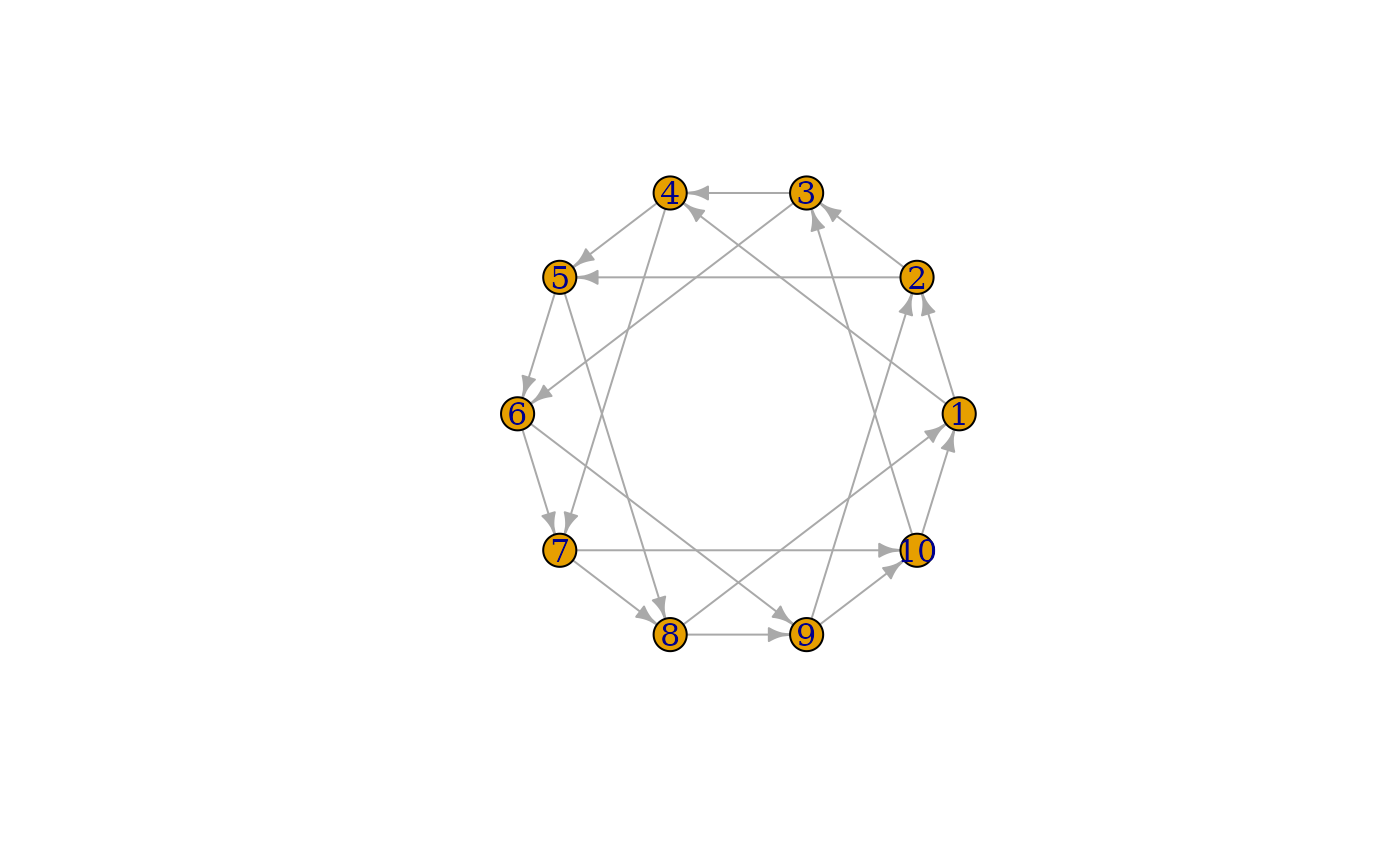A circulant graph \(C_n^{\textrm{shifts}}\) consists of \(n\) vertices
\(v_0, \ldots, v_{n-1}\) such that for each \(s_i\) in the list of offsets
shifts, \(v_j\) is connected to \(v_{(j + s_i) \mod n}\) for all \(j\).
Details
The function can generate either directed or undirected graphs. It does not generate multi-edges or self-loops.
See also
Other deterministic constructors:
graph_from_atlas(),
graph_from_edgelist(),
graph_from_literal(),
make_(),
make_chordal_ring(),
make_empty_graph(),
make_full_citation_graph(),
make_full_graph(),
make_full_multipartite(),
make_graph(),
make_lattice(),
make_ring(),
make_star(),
make_tree(),
make_turan(),
make_wheel()


